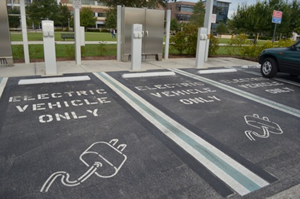By Sherri Shields
COCOA, October 24, 2013 – As interest in electric vehicles continues to keep the automotive industry charged, the nation is strategizing how to best integrate plug-in vehicles with its electrical grid and highways. Now, with funding from the U.S. Department of Transportation for the creation of the first transportation center with a focus on electric vehicles, the University of Central Florida will help chart that course in Florida.

The Electric Vehicle Transportation Center operated by UCF’s Florida Solar Energy Center is a newly funded, four-year, $9 million research effort to help create the nation’s electric-vehicle transportation network. Research conducted by the center will help transportation planners prepare our nation’s highways for the influx of plug-in electric vehicles (PEV), while developing “smart grid” applications that will strengthen the ability of our electric system to accommodate the power demands of electric vehicles. PEVs need a reliable, predictable network of charging stations to allow them to travel long distances without the fear of “running out of fuel.” Workplace charging, community charging, and highway fast-charging systems are in development. A new PEV transportation network designed in conjunction with the modernization of our electric grid system will result in a sustainable highway and energy network.




